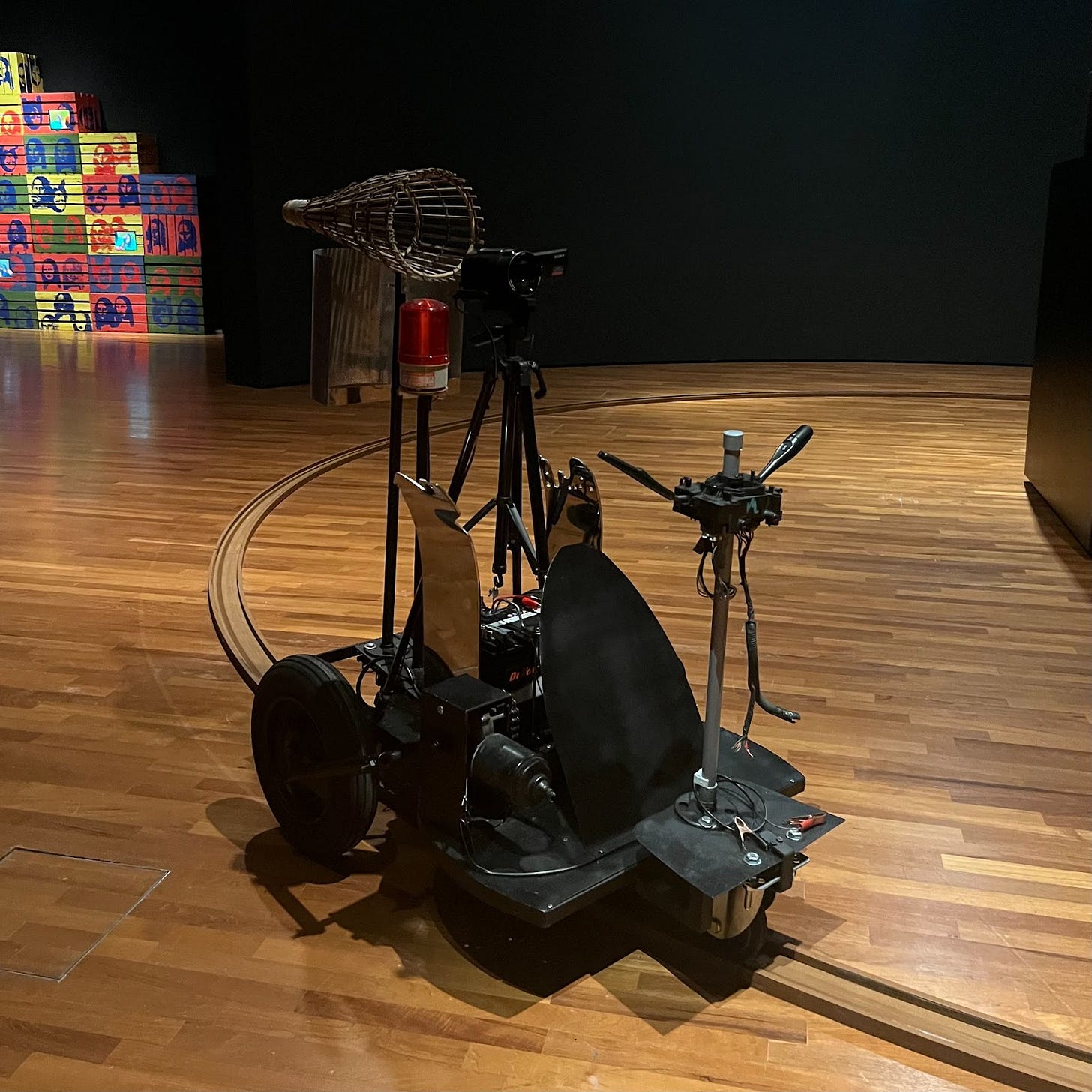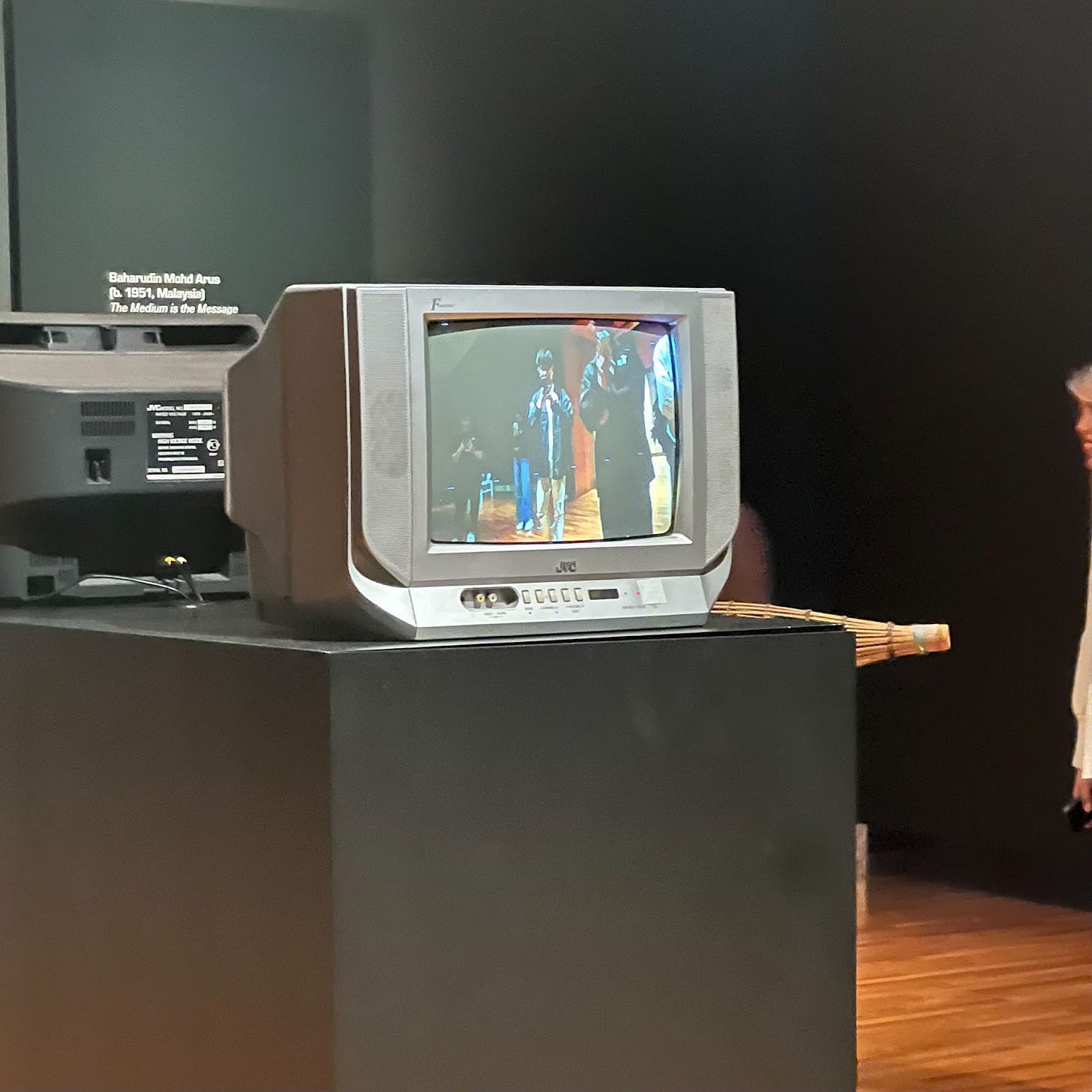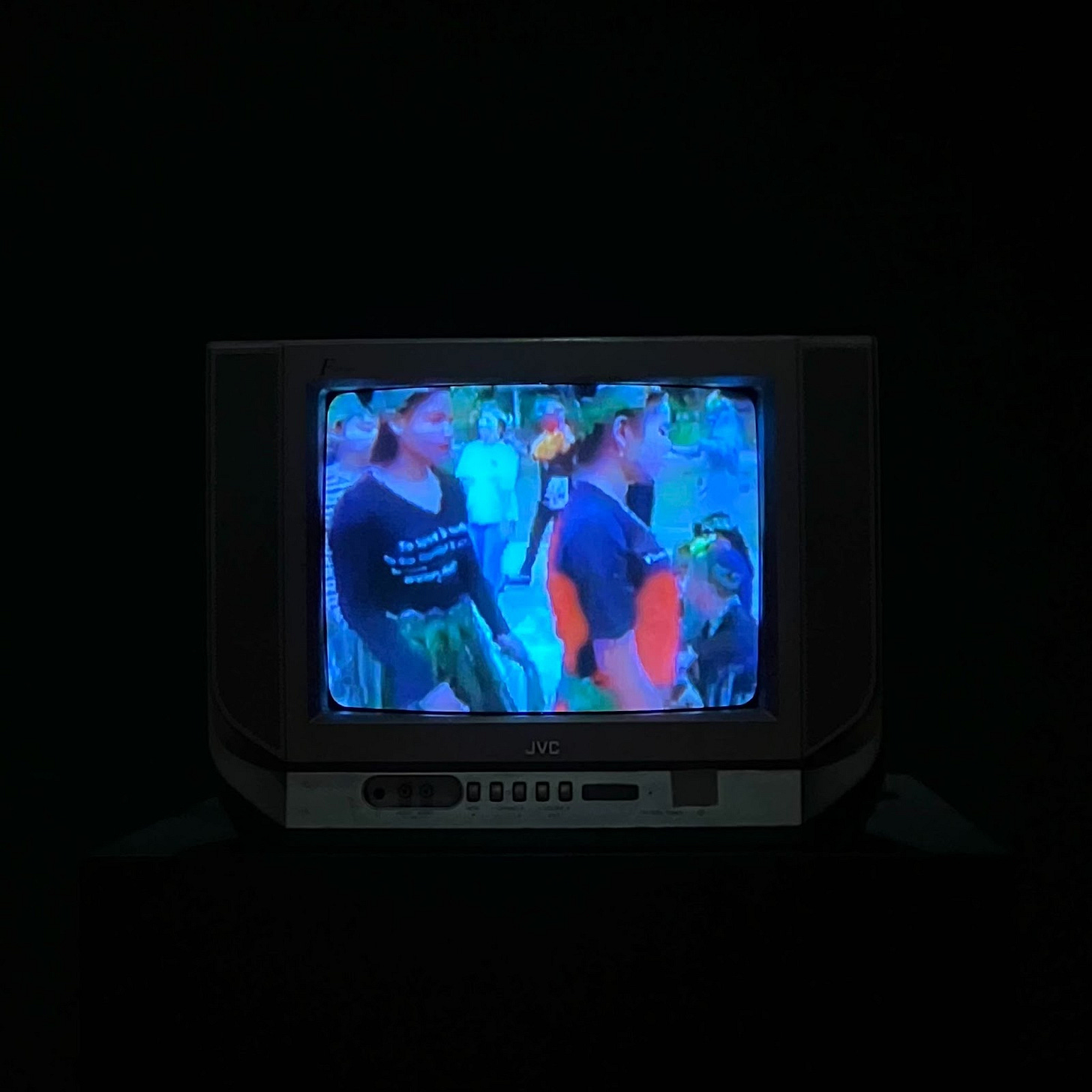What is the Message of Baharudin Mohd Arus' "The Medium is the Message (After Marshall McLuhan)"?
Analysing New Media through Baharudin's "The Medium is the Message (After Marshall McLuhan)", which was exhibited in National Gallery Singapore's "See Me, See You" exhibition.
In media critic Marshall McLuhan’s essay, “The Medium is the Message”, he posits that “the personal and social consequences of any medium… result from the new scale that is introduced into our affairs by each extension of ourselves, or by any technology”.1 This elicits that any medium affects how people view themselves and the world around them, prompting new ways to react and interact with the world around them. Titling his work after the seminal essay, Baharudin Mohd Arus’ The Medium is the Message (After Marshall McLuhan) uses multiple mediums, which in turn creates a variety of ways for the audience to interact with the work, putting precedence of the sensory effect of the medium over illuminating the content of the work.
If one were to break down Baharudin’s artwork into independent parts, it would include the automaton, the live feed, the loop of video montages and most importantly, the audience. These parts can be viewed and interpreted alone, but when discussed together, they create new interpretations for the audience. The artwork features a video camera mounted on a crude automaton. As the machine circumambulates around the two televisions, the audience is captured onto a live feed recorded by the camera, displayed on one of the two televisions. The automaton is a great example of McLuhan’s theory of how “the medium… shapes and controls the scale and form of human association and action”. The video camera of the digital age takes on the role of the traditional fish trap placed behind, while the red beacon light at the back takes on the role of bait, drawing attention to the machine and figuratively trapping its audience to be captured within its lens. The audience is immediately entranced by the artwork, fixating on the movement of the machine and for their presence to be captured on the screen. The audience now takes on multiple roles, transforming from a mere spectator to a participant and a prop for the artwork. Their physical presence is simultaneous to the virtual one, and the medium becomes an “extension of ourselves”. Critic Walter Benjamin’s perspective on film is reflected in the concept of Baharudin’s live feed. In his essay “The Work of Art in the Age of Mechanical Reproduction”, Benjamin claimed that the masses who had to surrender their humanity to apparatuses at work gained satisfaction from watching an apparatus work in service for a film actor who reclaims his humanity in front of it2. Parallel to this, the contemporary audience used to fixed televised broadcasts can now regain a form of choice and agency with how they decide to perform in front of the camera without being limited and censored.
With so much focus on the automaton and the live feed, one element of Baharudin’s artwork becomes almost forgotten — the television playing video montages. The montages include videos of people circling around the Kaaba in Mecca, the Mah Meri indigenous people’s Sewang dance, and hurricanes. McLuhan argues that “the effect of the medium is made strong and intense just because it is given another medium as ‘content’” and the audience is “almost entirely unaware” of the ‘content’. The two televisions are placed back-to-back; hence, if one were to view one television, they would not be able to view the other. As the audience becomes fixated on the motion of the automaton and the live feed, they are not conscious that the circumambulation of the machine mirrors the content of the montages. The televisions take on the roles of the Kaaba, the centre of the Sewang dance and the eye of the hurricane, whilst the audience parallels the pilgrims, the indigenous dancers, and the hurricane's rainbands. This puts Baharudin’s artwork into perspective and suggests that new media has replaced the role of religion, spirituality and nature for humanity, propounding the dawn of the Computer Age.
Baharudin’s The Medium is the Message (After Marshall McLuhan) demonstrates the importance of medium over content in new media art. The perception of the medium is crucial for the audience to develop their individualistic interpretations of new media art, which allows them to have a unique experience even in a communal setting.
McLuhan, Marshall. “The Medium Is the Message.” Understanding Media: The Extensions of Man, McGraw-Hill, 1964.
Benjamin, Walter. “The Work of Art in the Age of Its Technological Reproducibility.” The Work of Art in the Age of Its Technological Reproducibility, and Other Writings on Media, 1st ed., Harvard UP, 2008, pp. 19–55.






